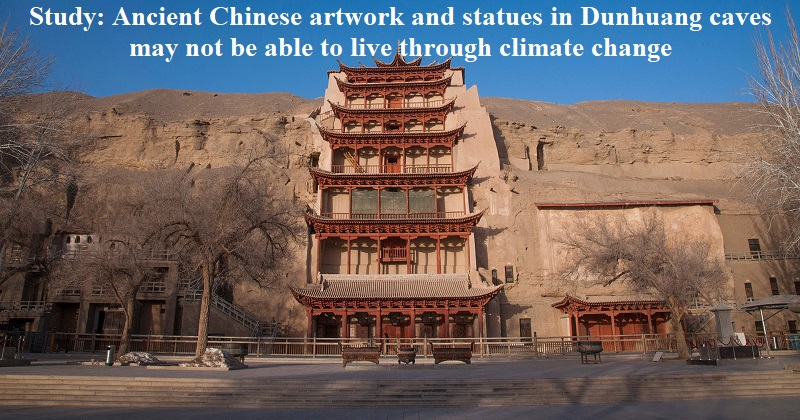
Researchers from Greenpeace issued a warning on Monday, stating that ancient Chinese artwork and statues in the Dunhuang caves of northwestern China may be at risk from climate change. The caves, which have survived for over a millennium, are now facing threats from extreme weather events, including heavy rainfall and increased moisture in the deserts of Gansu province.
Greenpeace explained that although total precipitation in the province has increased since 2000, there has been a decrease in the number of rainy days, resulting in more intense downpours. This change in weather patterns, with a temperature rise of 0.3 degrees Celsius per decade, faster than the global average, poses a danger to the delicate paintings and statues in the caves.
The environmental group highlighted that the paintings have started to flake and peel, and cracks have appeared in different parts of the UNESCO-listed world heritage site. These damages not only impact the artistic value but also undermine the structural integrity of the caves. Li Zhao, a senior researcher at Greenpeace East Asia, expressed concerns about spikes in humidity, flash floods, and cave-ins that are already occurring, posing an acute risk.
Li emphasized that the impact of climate change on the Dunhuang caves is a painful reality and urged efforts to document, understand, and conserve these historical treasures. He also noted that the risks extend beyond the Dunhuang caves, as many other sites in China face similar threats but receive less funding and study.
China is currently conducting a nationwide cultural heritage survey, but the process may take years, and there is a possibility of losing some of the country’s treasures before proper protection measures are implemented. Last month, Friends of Nature, an environmental group in Beijing, reported damage to ancient buildings in China’s northern province of Shanxi due to higher levels of rainfall.
Climate change has also been linked to the degradation of ancient cave and rock art in various countries worldwide, including France, Namibia, Indonesia, and Australia. Floods erode the artwork, salt crystallization causes flaking and peeling, and the combination of moisture and heat can even lead to the explosion of rocks with ancient paintings.
The Dunhuang caves, described as an oasis in the desert, hold significant historical value as one of the largest and longest-used treasure houses of Buddhist art. With the first cave constructed in 366 AD, the site now comprises 492 caves containing over 45,000 square meters of murals and more than 2,000 painted sculptures. Over the course of 1,000 years, Dunhuang became a repository of unmatched historical importance, serving as a stop for traders traveling the Silk Road between China and Central Asia.

Post Your Comments